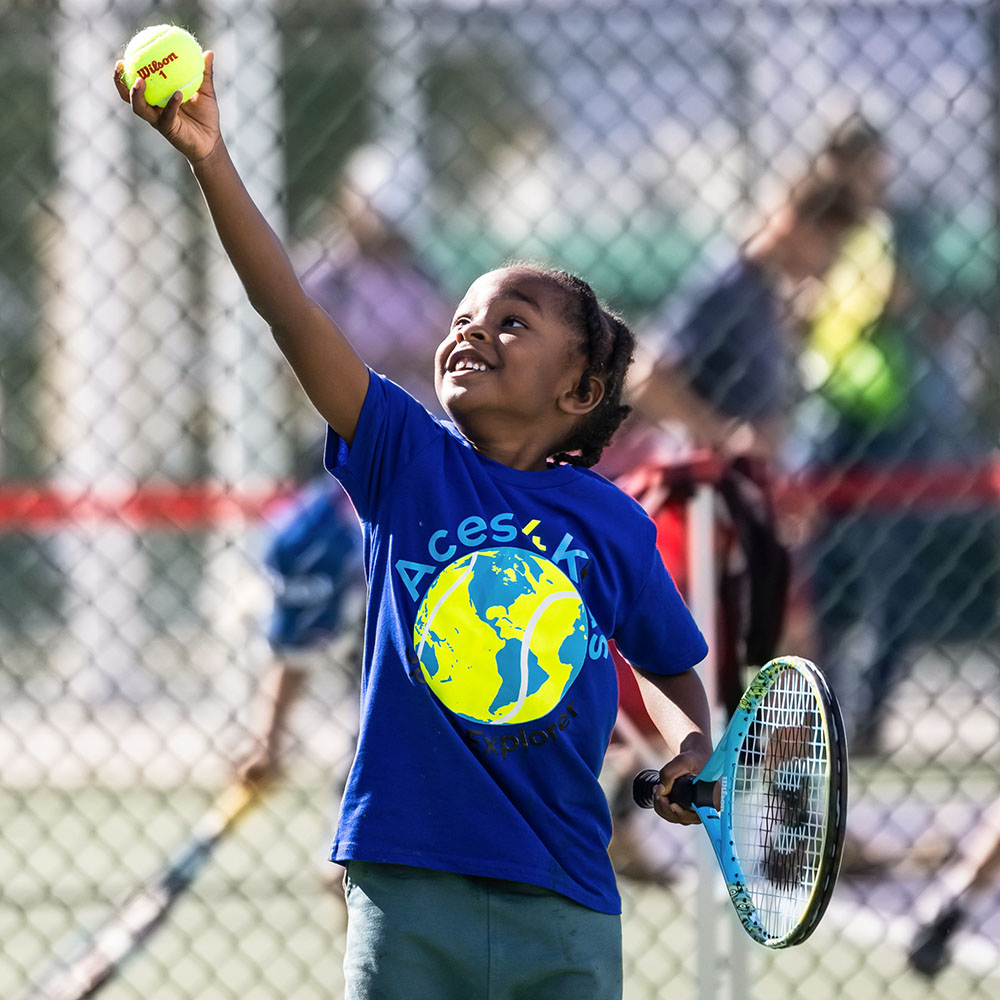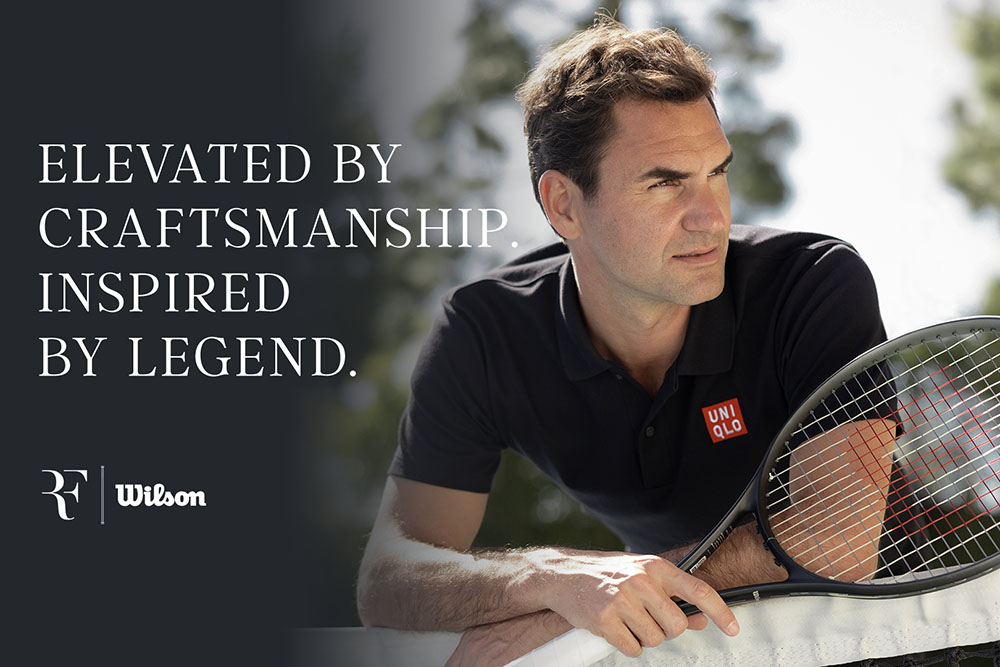Tennis Gear Guide: The Essential Equipment
for Beginner Players
USTA SOUTHERN CALIFORNIA
USTA SOUTHERN CALIFORNIA

A young junior tennis player picks up a ball during the BNP Paribas Open Family Day at the Indian Wells Tennis Garden.
(Photo – Jon Mulvey/USTA SoCal)
So you’re thinking about picking up a tennis racquet and giving the sport a try, but you’re not sure where to begin? Start here. Whether you’re stepping onto the court for the first time or dusting off your racquet after a long break, tennis is calling, and this guide is your perfect starting point. We’ll walk you through the essential gear every beginner needs to feel confident and prepared, so you can focus on the fun of learning and improving.
Often called the sport of a lifetime, tennis is as rewarding as it is accessible. You can start at any age, and you can play for life. In fact, research shows tennis can add up to 9.7 years to your lifespan, making it not just fun, but also one of the healthiest sports in the world. So if tennis isn’t part of your routine yet, you’re missing out on more than just great rallies and fresh air. Now’s the perfect time to change that.
Starting Strong: Why Gear Matters
Starting a new sport can feel overwhelming. From learning new rules to figuring out footwork and technique, there’s a lot to take in. But one of the simplest and most empowering ways to build confidence on the court is making sure you have the right equipment. Don’t worry, you don’t need to spend a fortune or be an expert. You just need the basics.
Here’s a quick checklist to get started:
– Tennis Racquet
– Tennis Balls
– Breathable Athletic Clothing
– Tennis or Non-Marking Athletic Shoes
– Sun Protection
– Water Bottle
Let’s break each item down.
Tennis Racquet: Find the Right Fit
Choosing a tennis racquet is often the first (and most intimidating) step for beginners. With major brands like Wilson, Babolat, Yonex, and Head dominating the shelves, it’s easy to feel overwhelmed. And while you may be tempted to dust off that hand-me-down racquet from the basement, perhaps a relic from your uncle’s glory days, it might not be the best fit if it hasn’t seen the court since the 1990s.
The good news? As a beginner, you don’t need to splurge on top-of-the-line equipment. A solid starter racquet can cost as little as $30-$50 and still deliver a great introduction to the game. In fact, many models under $100 come pre-strung and are perfectly suited for learning. You can also borrow one from a friend or rent from a local tennis club or pro shop while you figure out what works best for you.
Look for a racquet that feels light enough to swing comfortably, but still has enough heft to give you some stability and power. A standard adult racquet is typically 27 inches long, a great all-purpose size. Junior racquets are shorter and lighter, making them easier for kids to maneuver.
Quick Tip: Make sure the racquet grip fits your hand. When holding the racquet naturally (not too tight, not too loose), your thumb should just about touch the knuckle below the tip of your middle finger. If there’s a large gap—or your thumb wraps too far—it’s time to try a different grip size.
As you gain experience, you’ll begin to notice what feels best for your playing style, whether that’s more power, more control, or more spin. But right now, your focus should be on comfort, learning the basics, and having fun. The perfect racquet isn’t the most expensive, it’s the one that helps you fall in love with the game.
Tennis Balls: Don’t Overthink It
If you’ve ever wandered into a sporting goods store, you’ve probably seen walls stocked with tennis balls—pressurized, pressureless, extra duty, regular duty—it can be confusing! But here’s the good news: as a beginner, you don’t need to dive too deep into the details.
The classic yellow tennis ball typically comes three to a can and is widely available at pro shops, big-box stores like Target, Dick’s Sporting Goods, and Costco, as well as online retailers, and even some hardware and pharmacy chains. The main distinction to keep in mind? Regular Duty balls have a thinner felt covering, perfect for softer surfaces like clay courts, while Extra Duty balls feature a thicker felt designed to withstand the wear and tear of hard courts.
For beginners, sticking with standard pressurized balls from trusted brands like Wilson or Penn is the way to go. These balls offer a consistent, reliable bounce, ideal for building your rallies, serves, and groundstrokes with confidence.
Tennis balls don’t last forever. Over time, they lose pressure and become “dead” or bald, which means they won’t bounce properly and can throw off your timing. Using fresh balls not only improves your game but also adds to the joy of playing, there’s nothing like cracking open a new can and hearing that satisfying pop.
Quick Tip: Young kids often benefit from training balls. These are softer, bounce lower, and travel slower than standard balls, making it easier for juniors to develop their skills. Check out the USTA’s guide on which balls work best for different age groups.
You don’t have to use the same balls as the ATP and WTA pros at Wimbledon or the US Open to enjoy the game, but a fresh can will always make your time on the court better.
Clothing: Move Freely, Play Comfortably
Tennis is a fast-paced, high-movement sport, so your clothing should support, not restrict, you. Choose lightweight, breathable athletic gear that wicks away sweat and allows full range of motion. Moisture-wicking fabrics like polyester or nylon blends are ideal, especially in warm weather.
While tennis-specific outfits (like skirts, polos, or dresses) are optional, your comfort is what matters most. Many beginners wear standard workout clothes, and that’s perfectly fine.
Footwear: Protect Your Feet and the Court
Your shoes can make or break your experience on the court. The wrong footwear doesn’t just lead to discomfort, it can increase your risk of injury. Tennis involves constant bursts of movement: quick starts and stops, sharp cuts, lateral slides. That’s why choosing the right shoes is essential from the very first time you step onto the court.
You might be tempted to use your running shoes, but here’s the catch: they’re built for straight-ahead motion, not the side-to-side agility tennis requires. Without proper lateral support, chasing down a wide forehand can quickly turn into a rolled ankle. A cross-training shoe offers a bit more sturdiness and can work in the short term, but if you plan on playing regularly, your feet will thank you for investing in a pair of dedicated tennis shoes.
Tennis shoes are designed with court movement in mind. They provide the structure, grip, and stability needed to support your feet during explosive footwork. Most come with reinforced soles, extra cushioning, and durable uppers to handle the wear and tear of the court. Brands like Wilson, Nike, Adidas, Asics, Fila, and K-Swiss all offer solid, affordable options, many under $100, that are great for casual or recreational players.
Quick Tip: Look for shoes with non-marking soles and a court-specific tread. Most tennis shoes feature an all-surface outsole pattern that works well on both hard and clay courts. If you primarily play on clay, opt for a shoe with a tighter herringbone pattern to help with grip and sliding control.
The bottom line? Your feet are doing a lot of work out there, support them with the right shoes, and the rest of your game will follow.
Sun Protection: Essential for Outdoor Play
Tennis courts, especially hard courts, tend to reflect and retain heat, often making them significantly hotter than the surrounding area. In sunny regions like Southern California, it’s not unusual for the court surface to be as much as 10 degrees warmer than the air temperature. To stay safe and comfortable during play, be sure to protect yourself with a hat or visor, sunglasses with UV protection, and broad-spectrum SPF sunscreen. Don’t forget to reapply sunscreen every couple of hours, especially if you’re sweating. Your skin, and your future self, will thank you.
Stay Hydrated: Bring a Water Bottle
Simple but crucial, bring water. Tennis is physically demanding, and dehydration can creep up quickly, especially on hot days. Bring a refillable bottle and make a habit of drinking between games or every 15-20 minutes of active play.
Electrolyte-enhanced drinks or hydration tablets are a good option for longer matches or tournaments, but plain water works just fine for most beginners.
Bonus Tip: Embrace the Learning Curve
Tennis is one of the few sports you can play for a lifetime. It builds fitness, confidence, community, and a whole lot of fun. Whether you’re rallying at your local park or joining a recreational league, every player has been a beginner at some point. There’s no shame in starting small.
The tennis community is welcoming, diverse, and full of players of all ages and backgrounds. So lace up your shoes, grab your gear, and take that first swing. You’ve got this.
Ready to Get Started?
Find a local court near you on USTA.com and see what programs are available in your area. You might even discover beginner clinics, lessons, or group play sessions to help you ease in.
Welcome to the court, and to Team SoCal!





